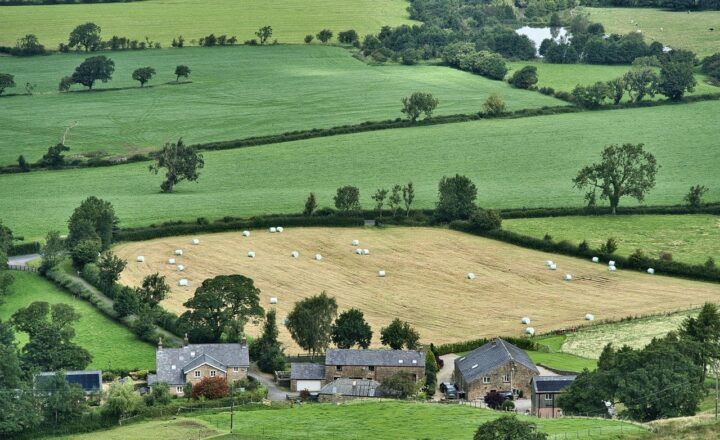The Future of Farming: From Ancient Techniques to Vertical Agriculture
November 15, 2024

Farming has long been the backbone of civilization, feeding populations and driving economic prosperity. Over thousands of years, agricultural practices have evolved, adapting to new technologies and changing environmental conditions. Today, we find ourselves at a crossroads, where ancient techniques coalesce with innovative practices like vertical agriculture to shape the future of farming. This article explores the journey of agriculture from its early roots to the contemporary marvels of vertical farming.
1. The Origins of Agriculture: A Brief Overview
The practice of agriculture dates back to roughly 10,000 years ago when humans transitioned from nomadic lifestyles of hunting and gathering to settled farming communities. This shift led to the domestication of various plants and animals, creating a stable source of food and enabling the growth of civilizations. Key developments in this era include:
- Irrigation Systems: Ancient societies, such as those in Mesopotamia, developed irrigation to divert water from rivers to their fields, significantly enhancing crop yields.
- Crop Rotation: Early farmers discovered the benefits of rotating crops to maintain soil fertility, a practice still relevant in modern farming.
- Selective Breeding: The deliberate selection of plants and animals for desired traits laid the groundwork for agricultural biotechnology today.
These early innovations set the stage for agricultural practices that would sustain civilizations for millennia. However, as populations grew and environmental changes became more pronounced, the need for sustainable farming practices became increasingly urgent.
2. From Fields to Factories: The Rise of Industrial Agriculture
The 20th century marked a dramatic shift in agricultural practices with the advent of industrial agriculture. This era is characterized by large-scale operations, mechanization, and high reliance on synthetic fertilizers and pesticides. Key features include:
- Mechanization: Tractors and combine harvesters revolutionized farming, increasing efficiency and crop yields while reducing labor costs.
- Monoculture: Farmers began to specialize in single-crop farming systems, which maximized production but also introduced numerous vulnerabilities like pest outbreaks and soil degradation.
- Chemical Inputs: The use of chemical fertilizers and pesticides became widespread, dramatically increasing agricultural productivity yet raising concerns over environmental and health impacts.
While industrial agriculture has achieved remarkable success in feeding billions, it has also led to significant challenges, such as soil depletion, water scarcity, and loss of biodiversity. The search for sustainable solutions to these problems has led to a renaissance in agricultural practices.
3. Sustainable Agriculture: Bridging the Gap
In response to the pitfalls of industrial agriculture, many farmers have turned toward sustainable practices that prioritize environmental health, economic profitability, and social equity. Some prominent methods include:
- Organic Farming: This movement emphasizes natural fertilizers and pest control, avoiding synthetic chemicals to produce healthier food and preserve ecosystems.
- Agroecology: This science-based approach applies ecological principles to agricultural systems, fostering biodiversity and resilience against climate change.
- Permaculture: Focused on creating sustainable ecosystems, permaculture integrates agricultural techniques with natural processes, ensuring the long-term health of the environment.
Sustainable agriculture serves as a bridge between traditional farming techniques and emerging innovations, highlighting the importance of working harmoniously with nature to ensure food security.
4. The Rise of Vertical Agriculture: A New Paradigm
As urban populations increase and arable land becomes scarcer, vertical agriculture has emerged as a groundbreaking approach to food production. This innovative farming method involves growing crops in stacked layers, often in controlled indoor environments. Key benefits include:
- Space Efficiency: Vertical farms can produce significantly more food in smaller areas compared to traditional farms, ideal for urban settings where space is limited.
- Resource Conservation: Advanced technologies in vertical farming, such as hydroponics and aeroponics, utilize less water and land compared to conventional farming practices.
- Reduced Carbon Footprint: By localizing food production within urban centers, vertical farms minimize the carbon emissions associated with transporting food over long distances.
The concept of vertical agriculture raises questions about the future of food security and community resilience as technological advancements pave the way for a new era in farming.
5. Technological Innovations in Vertical Farming
The foundation of vertical farming lies in its integration of cutting-edge technology, allowing for highly efficient and controlled agricultural processes. Some critical technologies include:
- LED Lighting: Energy-efficient LED lights simulate natural sunlight, enabling crops to grow without relying on outdoor conditions, while also enhancing growth rates and yields.
- Climate Control Systems: Advanced HVAC systems create optimal environments for plant growth by regulating temperature, humidity, and airflow, leading to higher production efficiency.
- Data Analytics and AI: Big data and artificial intelligence are increasingly harnessed to monitor plant health and improve yield predictions, creating a more responsive agricultural system.
Through these innovations, vertical farming presents a highly promising model for urban agriculture, ensuring year-round crop production despite climate fluctuations.
6. The Future of Food: Integrated Systems and Sustainability
The future of farming hinges on integrating diverse agricultural practices for a more resilient and sustainable food system. The intersection of ancient wisdom and modern technology offers exciting possibilities:
- Urban-Rural Linkages: Connecting urban vertical farms with rural agricultural practices can create a harmonious food system that promotes local economies and reduces food waste.
- Community Engagement: Involving local communities in food production not only enhances food security but also strengthens social ties and promotes healthier lifestyles.
- Research and Development: Continued investment in agricultural research, technological advancements, and policy support will be crucial to realizing the potential of both traditional and vertical farming methods.
By embracing a multifaceted approach to agriculture, we can cultivate a sustainable future that honors both our agricultural heritage and the innovations that will feed future populations.
Conclusion: A New Era for Agriculture
The evolution of agriculture from ancient practices to modern innovations like vertical farming highlights humanity’s ability to adapt to changing circumstances. As we face pressing global challenges such as climate change, food insecurity, and urbanization, harnessing both traditional and contemporary agricultural techniques is more essential than ever.
With sustainable practices and innovative technologies, we have the opportunity to build a resilient food system that nourishes both people and the planet. In this new era, farming will not just be about growing food; it will also be about cultivating communities and cultivating a sustainable future for generations to come.








